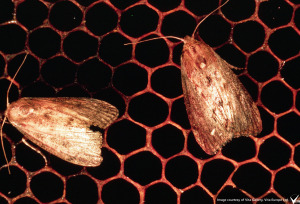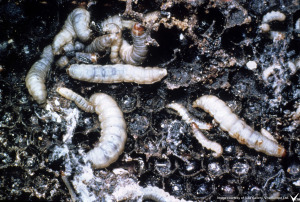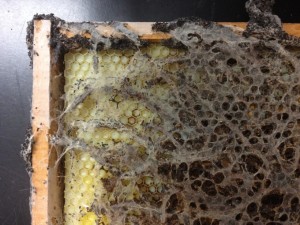Galleria mellonella
Description
The adult wax moth has a body length that is usually ½ to ¾ inch long. Its wings vary in color from brown to gray to black, with a light gray color on the underside and are held in a roof-like position when at rest. The larvae are white once hatched, but overtime gradate into a dark gray color with a white underside and a brown head capsule. These larvae can reach a length of 1 inch. Adult moths enter hives at dusk to lay their eggs in masses. Once hatched, the larvae hide in the comb and feed on pollen, wax, and honey stores. The larvae pupate in hive and attach their silk cocoon to the side, creating large gouges in the wood.
Control
Maintaining a strong queen-right hive is the best defense against the wax moth and its larva. Place any infected comb in a freezer to kill the larvae and eggs. ParaMoth can be used during storage of frames and boxes. Do not substitute ordinary moth balls for ParaMoth as the chemicals in store bought moth balls may harm the bees. When storing supers, crisscross their stacking and expose them to light to deter wax moths from inhabiting them.




